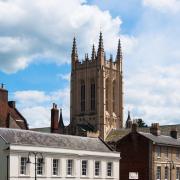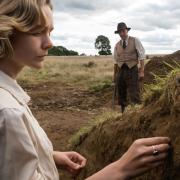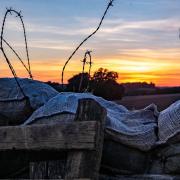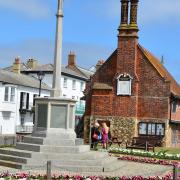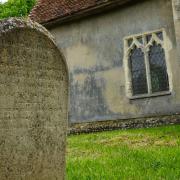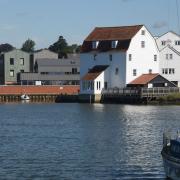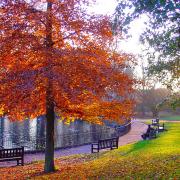Bury St Edmunds is celebrating its ancient abbey that’s been at the heart of the town’s identity for a millennium | Words: Catherine Larner

Due to current lockdown measures events may not be running as normal. For more information on the programme of activities, visit abbeyofstedmund1000.co.uk
Precision-planted formal flower beds lie on one side while undulating lawns, punctuated by mounds of flint and mortar from ancient ruined walls and columns, sit on the other.
The entrance to the town boasts the formidable 14th century Great Gate and everything is overseen by the warm, golden tower of the modest, unassuming cathedral.
The Abbey Gardens in Bury St Edmunds have long been a beautiful, extraordinary and fascinating mix of understated delight, attracting 1.3 million people each year. But this year the true significance of the history of this place will be brought to the fore.

A collection of organisations, businesses, community groups, council officials and church leaders have come together to form Abbey 1000, a programme of activities to celebrate 1000 years since the Abbey of St Edmund was founded by King Canute.
“The Abbey was once the biggest building in Europe and was one of the most famous and wealthy pilgrimage locations in England,” says Andrew Speed, chair of the Abbey 1000 committee and a local businessman. “I had no idea of its significance.”
Events throughout the town will introduce local people, and regional and national visitors, to the role of the Abbey in the Magna Carta story and the dissolution of the monasteries.
They’ll learn about the Great Riot of 1327 and the funeral cortege of Mary Tudor, now buried in St Mary’s Church. And there will be lots to discover about Edmund, the first patron saint of England.

“In the last couple of years, the presence of Edmund has been clear in the town,” says Canon Matthew Vernon, chair of the Abbey of St Edmund Heritage Partnership. “Whether people are churchgoers or not, he is very much part of our local identity.”
Edmund, King of East Anglia from 855-869, refused to give up his Christian faith when he was captured in battle. Shot with arrows and then beheaded, it was said that in death his head and body were miraculously fused back together. Martyred, he was adopted as the patron saint of England.
In 1020, King Canute had a stone church built for the body of Saint Edmund, and 13 Benedictine monks from Norfolk, and seven from Ely, arrived. The great Abbey Church would later be built on the site and consecrated in 1059.
Edmund’s shrine was plundered, and his body found to be missing. Its location still remains a mystery. Currently there is speculation, though, that Edmund is buried beneath the former tennis courts at the perimeter of the Abbey Gardens.

Historical and archaeological investigation this year may unearth the truth, but certainly investment in interpretation of the site will unveil the past and make it more accessible to the visitor and local community. Meanwhile the millennium celebrations champion the cause.
“This is a historically significant year for the Abbey and Bury St Edmunds,” says Canon Vernon.
“We are joining together to mark the anniversary through wonderful events and activities, and to learn more about our local and personal identity through the history of place.”
There will be a Millennium anthem specially composed by John Rutter, a procession of monks and nuns led by the former Archbishop of Canterbury Rowan Williams, a public picnic in the Abbey Gardens, a Spectacle of Light, a community mosaic art project, the Abbey Trail around the town, a sculpture exhibition within the Abbey ruins, and an exhibition of manuscripts from the Abbey.

There will also be special concerts within the Bury St Edmunds Festival, anniversary tours led by the town guides and numerous talks and workshops. And people will be encouraged to celebrate the anniversary themselves by raising money for local hospices – a goal of £1,000 to mark the 1,000 years has been suggested.
Taking place throughout the year, the events will culminate in the weekend of St Edmund’s Day on November 20, 2020.
“It incorporates all sectors of Bury and Suffolk community,” says Andrew Speed of the programme of activities. “Whether it is religious, musical, educational, business, theatrical, the broader community is at the heart of it.”
“Here at the cathedral we clearly represent the Christian faith but we see our role in the town as serving the community,” says Canon Vernon.

“The Abbey was a Christian place, a monastic centre, so we are glad to remind people of that heritage. We also want to encourage people to think about God’s presence in their lives and what that might mean today.
“To the Benedictine monks and nuns, being committed to a place or a group of people enables you to grow as a person, and to be more aware of God.
“It is good for our wellbeing to be aware of our local history, identity and roots.”
Due to current lockdown measures events may not be running as normal. For more information on the programme of activities, visit abbeyofstedmund1000.co.uk




